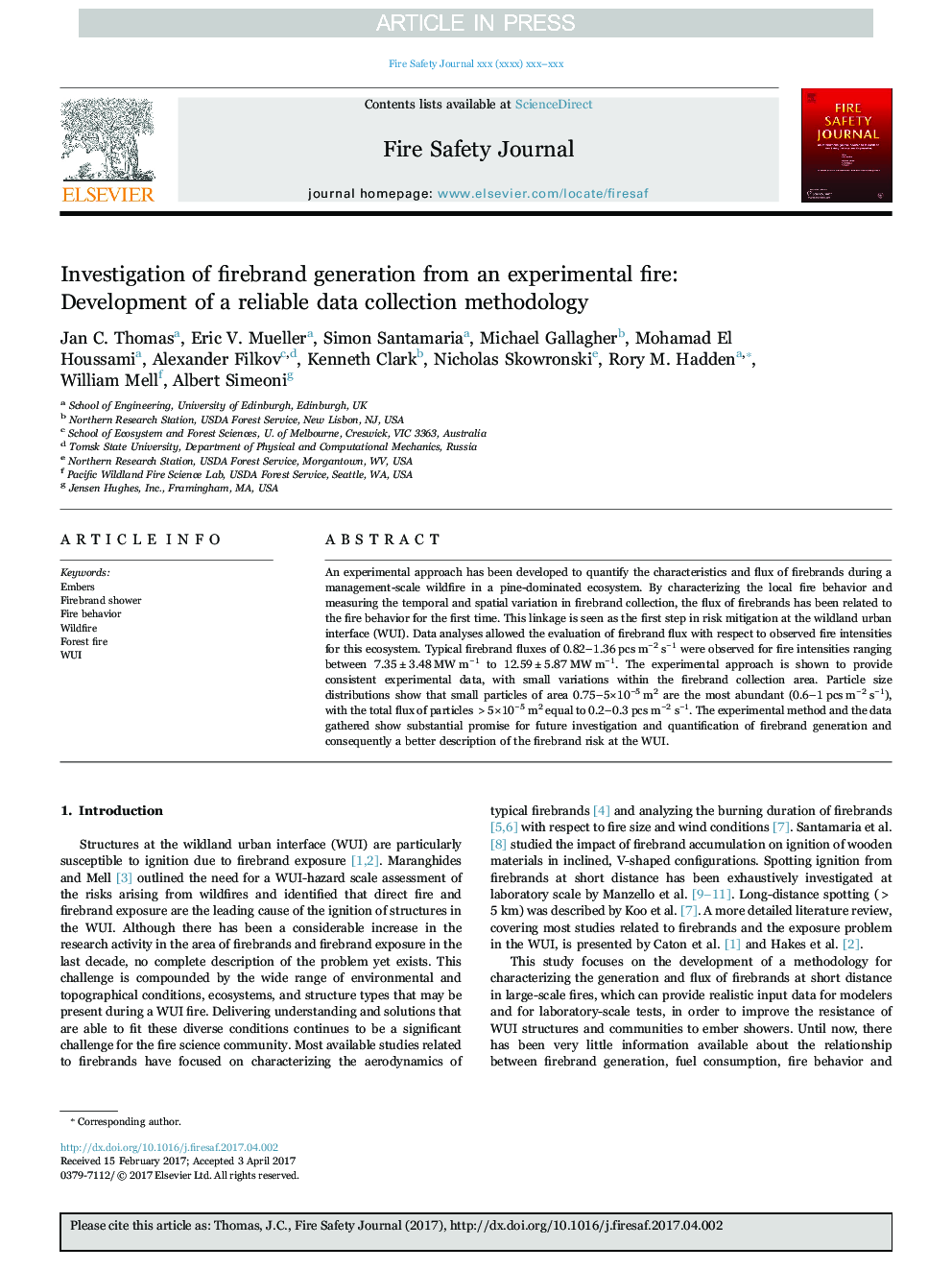| Article ID | Journal | Published Year | Pages | File Type |
|---|---|---|---|---|
| 4920974 | Fire Safety Journal | 2017 | 8 Pages |
Abstract
An experimental approach has been developed to quantify the characteristics and flux of firebrands during a management-scale wildfire in a pine-dominated ecosystem. By characterizing the local fire behavior and measuring the temporal and spatial variation in firebrand collection, the flux of firebrands has been related to the fire behavior for the first time. This linkage is seen as the first step in risk mitigation at the wildland urban interface (WUI). Data analyses allowed the evaluation of firebrand flux with respect to observed fire intensities for this ecosystem. Typical firebrand fluxes of 0.82-1.36 pcs mâ2 sâ1 were observed for fire intensities ranging between 7.35±3.48 MW mâ1 to 12.59±5.87 MW mâ1. The experimental approach is shown to provide consistent experimental data, with small variations within the firebrand collection area. Particle size distributions show that small particles of area 0.75-5Ã10â5 m2 are the most abundant (0.6-1 pcs mâ2 sâ1), with the total flux of particles >5Ã10â5 m2 equal to 0.2-0.3 pcs mâ2 sâ1. The experimental method and the data gathered show substantial promise for future investigation and quantification of firebrand generation and consequently a better description of the firebrand risk at the WUI.
Keywords
Related Topics
Physical Sciences and Engineering
Engineering
Civil and Structural Engineering
Authors
Jan C. Thomas, Eric V. Mueller, Simon Santamaria, Michael Gallagher, Mohamad El Houssami, Alexander Filkov, Kenneth Clark, Nicholas Skowronski, Rory M. Hadden, William Mell, Albert Simeoni,
